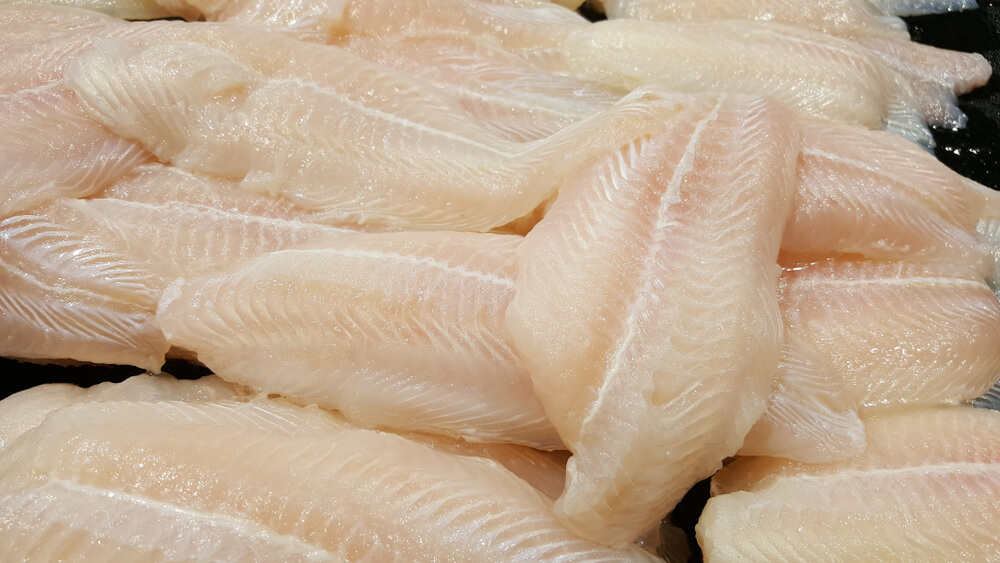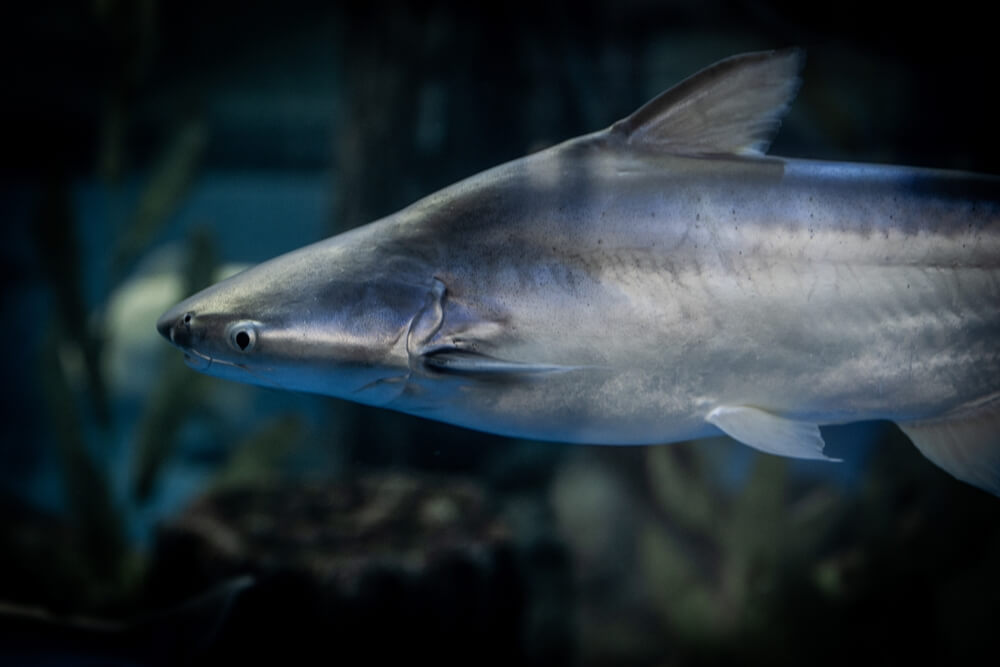Swai fish, also known as Pangasius or iridescent shark, is a freshwater fish native to Southeast Asia. It has gained popularity in various parts of the world due to its mild flavor and affordability. This blog section will delve into everything you need to know about swai fish, from its nutritional value and health benefits to potential risks and cooking tips.
What is Swai Fish?
Swai fish, scientifically known as Pangasius hypophthalmus, is a freshwater fish native to the Mekong River in Southeast Asia. Commonly farmed in Vietnam, this species has gained popularity worldwide due to its mild flavor and versatile culinary applications.
Swai fish belongs to the Pangasiidae family and is often confused with catfish because of its similar appearance. However, it is distinct in both habitat and characteristics. The swai fish typically has a white flesh with a delicate texture that makes it suitable for various cooking methods, including grilling, frying, and baking.
There are different types of swai fish based on their size and farming practices. While some farms focus on producing larger fillets for commercial sale, others may cultivate smaller-sized swai for local markets. Understanding what swai fish is and its origins can help consumers make informed choices when selecting seafood options.
The definition of swai fish encompasses its identity as a freshwater species from Southeast Asia known for its mild taste and adaptability in recipes. Its origin from the Mekong River highlights its cultural significance in Vietnamese cuisine while also explaining why it’s become a global favorite among seafood lovers.
Nutritional Value of Swai Fish

Swai fish, a popular choice among seafood enthusiasts, offers a variety of nutritional benefits that make it a worthy addition to your diet. Known for its mild flavor and tender texture, swai fish is not only delicious but also packed with essential nutrients.
When it comes to swai fish nutrition, one of the standout features is its protein content. A 4-ounce serving of swai provides approximately 15 grams of high-quality protein, making it an excellent source for those looking to boost their protein intake without consuming too many calories. Speaking of calories in swai fish, this same serving size contains around 90-100 calories, which makes it a low-calorie option suitable for weight management and healthy eating plans.
In addition to its favorable protein-to-calorie ratio, swai fish also offers other health benefits. It is rich in omega-3 fatty acids, which are known for their heart-health properties and ability to reduce inflammation. Furthermore, swai fish contains essential vitamins and minerals such as vitamin D, vitamin B12, selenium, and phosphorus.
Overall, incorporating swai fish into your diet can provide you with valuable nutrients while keeping your calorie count in check. Whether grilled, baked or sautéed, this versatile fish can be enjoyed in numerous recipes while contributing positively to your overall health.
Health Benefits of Eating Swai Fish
Swai fish, a popular and affordable seafood option, offers a range of health benefits that make it a valuable addition to your diet. One of the primary advantages of eating swai fish is its content of omega-3 fatty acids. These essential fats play a crucial role in maintaining heart health by reducing inflammation and lowering the risk of cardiovascular diseases.
In addition to promoting heart health, swai fish is also an excellent low-fat seafood option. It provides high-quality protein without the high levels of saturated fat found in some other types of meat. This makes it an ideal choice for those looking to maintain or lose weight while still ensuring they receive adequate nutrition.
Furthermore, incorporating swai fish into your meals can contribute to overall well-being by providing essential nutrients such as vitamins B12 and D, selenium, and phosphorus. These nutrients support various bodily functions, including energy production, bone health, and immune system function.
The benefits of eating swai fish are numerous: from its heart-healthy omega-3 fatty acids to its status as a low-fat protein source packed with essential nutrients. Adding this versatile fish to your diet can be a delicious way to enhance your overall health.
Potential Risks and Concerns Associated with Swai Fish
Swai fish, a popular choice among seafood lovers for its mild flavor and affordability, is not without its potential risks and concerns. One of the primary issues associated with swai fish is the presence of contaminants often found in farmed fish. These contaminants can include harmful chemicals, antibiotics, and other pollutants that may pose health risks to consumers.
Another significant concern is the mercury levels in swai fish. While typically lower than in larger predatory fish, mercury accumulation can still be a problem depending on the farming practices and water quality where the fish are raised. Consuming high levels of mercury over time can lead to serious health issues, particularly affecting the nervous system.
Additionally, imported seafood safety concerns add another layer of risk when it comes to swai fish. Much of the swai available in markets is imported from countries with varying regulations on food safety standards. This inconsistency can lead to increased chances of contamination and poor quality control.
While swai fish remains an accessible option for many consumers, it’s crucial to be aware of these potential risks and make informed choices about seafood consumption. Opting for reputable sources and staying updated on food safety advisories can help mitigate some of these concerns.
Sustainable Practices and Sourcing for Swai Fish
The sustainability of swai farming has become a focal point for both consumers and producers aiming to promote environmentally friendly fishing practices. Swai, a type of catfish native to Southeast Asia, is farmed primarily in Vietnam under conditions that can vary widely in their environmental impact. To ensure the ethical sourcing of seafood, several measures are being implemented to improve the sustainability of swai farming.
One significant step toward sustainable swai farming involves adopting aquaculture practices that minimize water pollution and habitat destruction. Farms are increasingly using closed-loop systems that recycle water and reduce waste discharge into natural waterways. Additionally, efforts are being made to source feed responsibly by avoiding overfished species and opting for plant-based alternatives where possible.
Another critical aspect is the certification process. Certifications from organizations such as the Aquaculture Stewardship Council (ASC) help consumers identify products that meet rigorous standards for environmental responsibility and social accountability. These certifications ensure that farms operate ethically, with minimal negative impact on local ecosystems.
Moreover, transparency in sourcing is vital for promoting sustainable practices. Many companies now provide detailed information about their supply chains, allowing consumers to make informed choices about the seafood they purchase. This transparency helps build trust between producers and consumers while encouraging more responsible farming methods.
While challenges remain, strides are being made toward more sustainable and ethically sourced swai fish through improved aquaculture practices, certification processes, and enhanced supply chain transparency. By supporting these initiatives, we can contribute to a healthier planet while enjoying responsibly sourced seafood.
The Best Ways to Cook Swai Fish
Swai fish, known for its mild flavor and tender texture, is a versatile ingredient that can be prepared in various delicious ways. Whether you’re a seasoned chef or a home cook looking to try something new, here are some of the best methods and recipes for cooking swai fillets.
Grilling Swai Fillets
Grilling is an excellent way to cook swai fillets, imparting a smoky flavor that complements the fish’s natural taste. To grill swai, preheat your grill to medium-high heat and lightly oil the grates. Season the fillets with salt, pepper, and your favorite herbs or spices. Grill the fillets for about 4-5 minutes on each side until they are opaque and flake easily with a fork.
Baking Swai Fillets
Baking is another healthy option that ensures even cooking while preserving the moisture of the fish. Preheat your oven to 375°F (190°C). Place the seasoned swai fillets on a baking sheet lined with parchment paper or foil. For added flavor, you can top them with lemon slices or a garlic butter sauce. Bake for 15-20 minutes until the fish is fully cooked.
Frying Swai Fillets
For those who enjoy crispy textures, frying swai fillets can be incredibly satisfying. Heat oil in a skillet over medium-high heat. Coat the fillets in flour or breadcrumbs mixed with seasonings before placing them in hot oil. Fry each side for about 3-4 minutes until golden brown and crispy.
Cooking Tips for Tasty Seafood Dishes
1. Marinate: Marinating swai fillets before cooking can enhance their flavor significantly.
2. Temperature Control: Always ensure that your cooking temperature is appropriate; too high can dry out the fish while too low might leave it undercooked.
3. Fresh Ingredients: Use fresh herbs, spices, and citrus fruits to add vibrant flavors to your dishes.
4. Experiment: Don’t hesitate to try different seasonings and sauces—swai’s mild flavor pairs well with various ingredients.
By exploring these methods you’ll discover how versatile and delicious swai fish can be when prepared correctly.
Conclusion (Is Swai Fish a Good Choice for Your Diet?)
Swai fish, also known as Pangasius or Basa, has become a popular choice in many households due to its affordability and mild flavor. When considering whether Swai is a good addition to your diet, it’s essential to weigh both the nutritional benefits and potential concerns.
From a nutritional standpoint, Swai fish is relatively low in calories and provides a decent amount of protein. A typical serving offers around 15 grams of protein with minimal fat content, making it an appealing option for those looking to maintain or lose weight. Additionally, it contains essential nutrients such as omega-3 fatty acids, which are beneficial for heart health.
However, there are some considerations to keep in mind. The farming practices of Swai fish have raised concerns regarding environmental impact and potential contamination. It’s crucial to source Swai from reputable suppliers who adhere to strict farming standards to ensure you’re consuming a safe product.
In summary, Swai fish can be a good dietary choice if sourced responsibly. It offers valuable nutrients at an affordable price but should be consumed with awareness of its origin and farming practices. By making informed decisions about where your food comes from, you can enjoy the benefits of Swai while minimizing potential risks.






